Zehra Khan exudes a graceful efficacious energy and an engagement with life rarely encountered. Her unique background coupled with an outlander sensibility can be seen clearly in the visual materials she produces. This week, The COMP Magazine headed up to Sheridan Park to discuss with Khan her recent artist residency in Kathmandu, Nepal, the role of fiber-art and performance in her aesthetic practice, and how she recycles materials (from past to present) to create what appear to be acutely personal narratives that can be examined on a universal level.
You are a rather unique spirit. I believe your father was a Pakistani diplomat and mother was from Idaho(?). You grew up in a variety of places and most recently resided out east. Can you discuss any early experiences that may have influenced your interest in pursuing a career in aesthetic pursuits?
My mother is from Idaho and worked as a diplomat, my father is from Pakistan and worked in architecture. I was born in Indonesia and lived in Paris, then Switzerland, and then at 11 years old moved to Massachusetts.
I grew up around a lot of different kinds of arts and craft practitioners. Beginning in pioneer days women in my family made quilts and embroidered. My aunt in Pakistan is a painter and art teacher. My mom took interesting-looking classes when I was a kid, like upholstery, and ikebana flower arrangements.
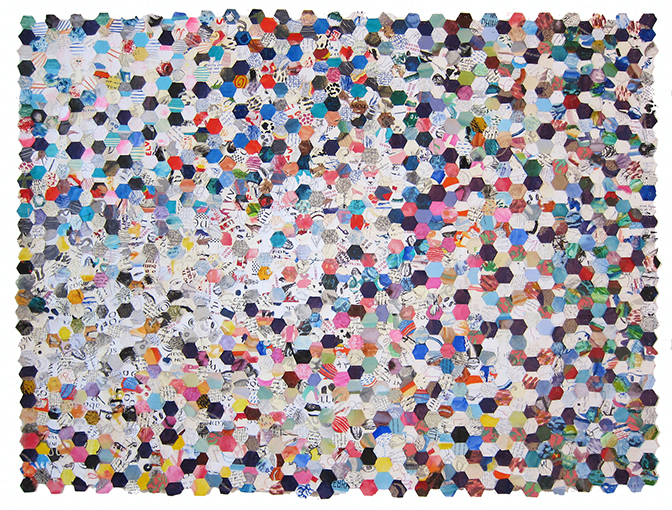
You recently did an artist residency in Kathmandu, Nepal. There you created a series of masks using contemporary Covid-19 masks that appear to have an eastern influence. Can you share with us your experience at the residency? Also, what was your focus during this time?
I was recently at an art residency at Space A in Kathmandu, Nepal. I was drawn to Nepali masks and the iconography of Lahkes – demons who are actually protectors. In the time of the corona virus, many of us are wearing protective, disposable surgical masks. I used these covid masks to sculpt into Lahke masks.
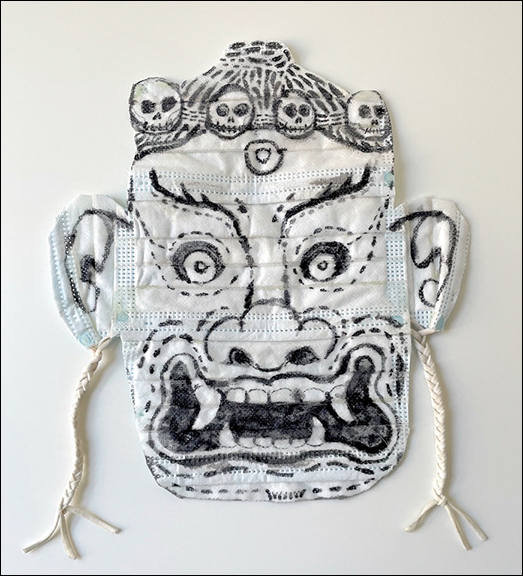
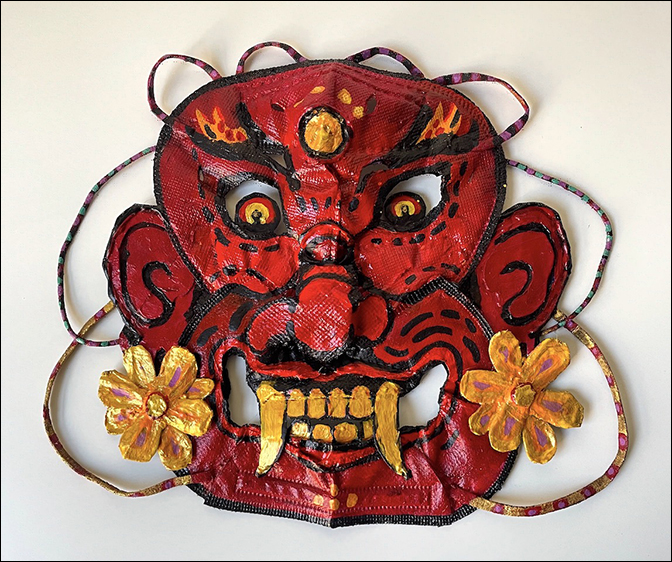
Your practices appear to draw from a variety of conceptual and formal areas. I see patterns that remind of outsider artists (e.g., Séraphine Louis, Adolphe Wölfli, Lee Godie) merging with eastern mysticism and philosophies. There are also the performative elements that create a whole other layer. Can you discuss your process of selection and assembly?
I am often motivated by opportunity… If I encounter an incredible space, or find people who want to collaborate, I am drawn to make performance work with them.
When at home in my studio I have time to create work that involves a repetitive meditative process. I think that this repetitive pattern-making is something I share with outsider artists.
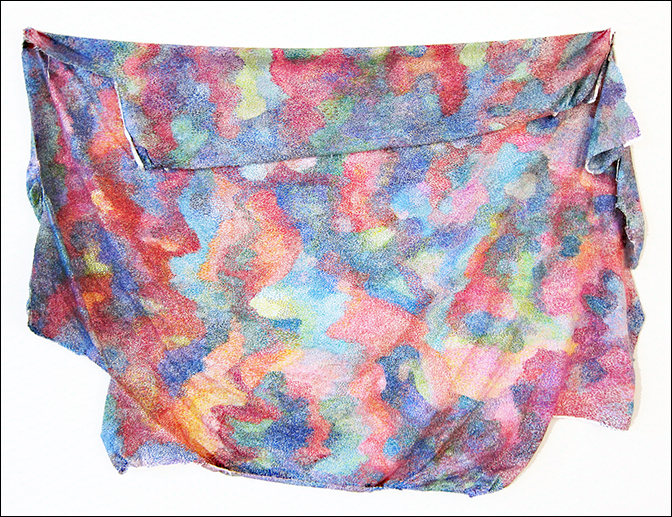
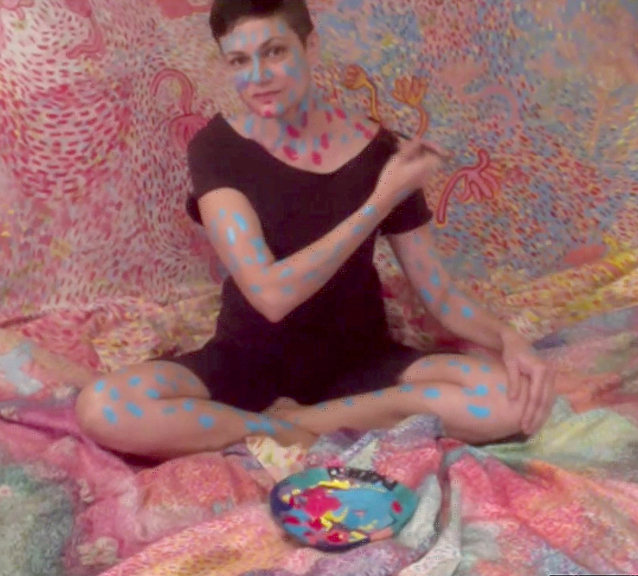
You often work with materials that are recycled from other activities and experiences. Can you discuss the motivation for this approach?
I am very motivated by the objects around me. So when an object/artwork feels unfinished, or like a first draft, breaks, loses functionality, or becomes a possible candidate for the trash, I take it as an opportunity to recycle it and turn it into something else. I have repurposed old paintings, drawings, photographs, elementary school homework, college notes, exhibition postcards, diary entries, torn clothing, and costumes.
It is a kind of reincarnation. Or cannibalisation. Or both.
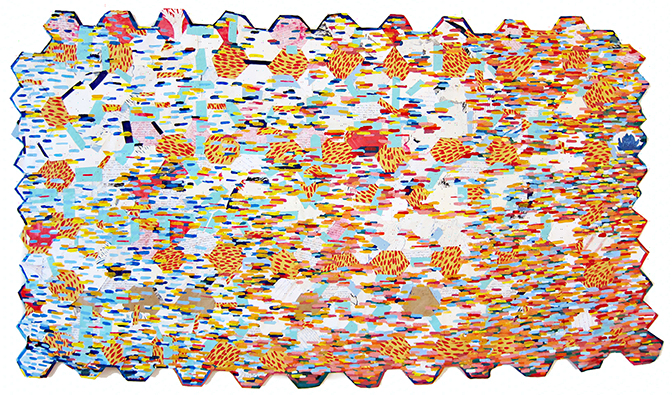
In recent time, I have noticed that fiber-arts appear to be under regular investigation by a range of visual artists and designers. This acknowledgement is long overdue. Can you discuss your approach? For instance, one work that resonates for me is the quilt you’ve made where you have taken materials from items from past experiences.
I began working with fabric because of the connection between fabric and the body. I am interested in the corporeal, domestic, and intimate. I paint on clothes, bedsheets, pillowcases, and blankets. I also create work which references fabric while being created by something contradictory, like paper or glue. I am inspired by quilting, embroidery, and lace-making, while using my own style of construction techniques; collage, hot glue or stapling.
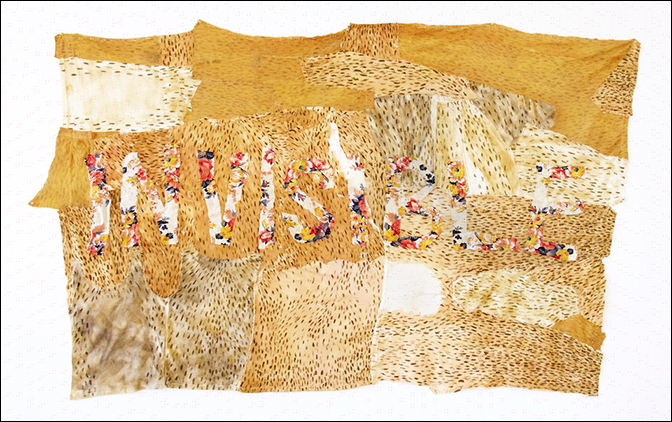
You are a member of Tiger Strikes Asteroid. This appears to be a great entry point to Chicago’s art community. Do you see this collaboration influencing your present art practice?
I feel very lucky to be a member of Tiger Strikes Asteroid! We are a cooperative gallery, and takes turns exhibiting and curating. I was introduced to the gallery through member Julia Klein, whom I met at an art residency at the Vermont Studio Center in 2014. After moving to Chicago, Julia invited me to be an artist-in-residence at Tiger Strikes Asteroid in February 2020.
Not long after, TSA invited me to join their gallery. I still had a lot to learn about Chicago, let alone the Chicago art scene, when Covid-19 quarantine began March 2020. The gallery moved their meetings from in-person to online. These meetings connected me to artists and exhibitions, made me aware of galleries and grant opportunities, and kept me talking about art.
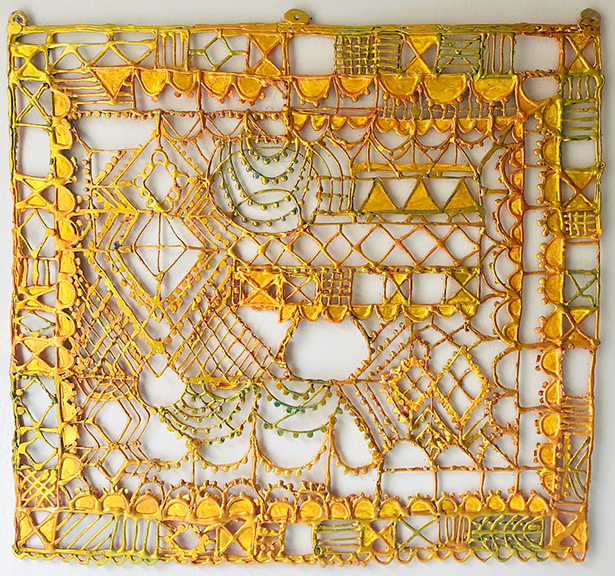
What do you value most in your aesthetic practice?
I value that making art gives me a chance to connect with people and share something. I also create artwork to learn about myself. My thoughts are a real jumble, making art provides clarity. My art has a louder, braver, and stranger voice than I do.
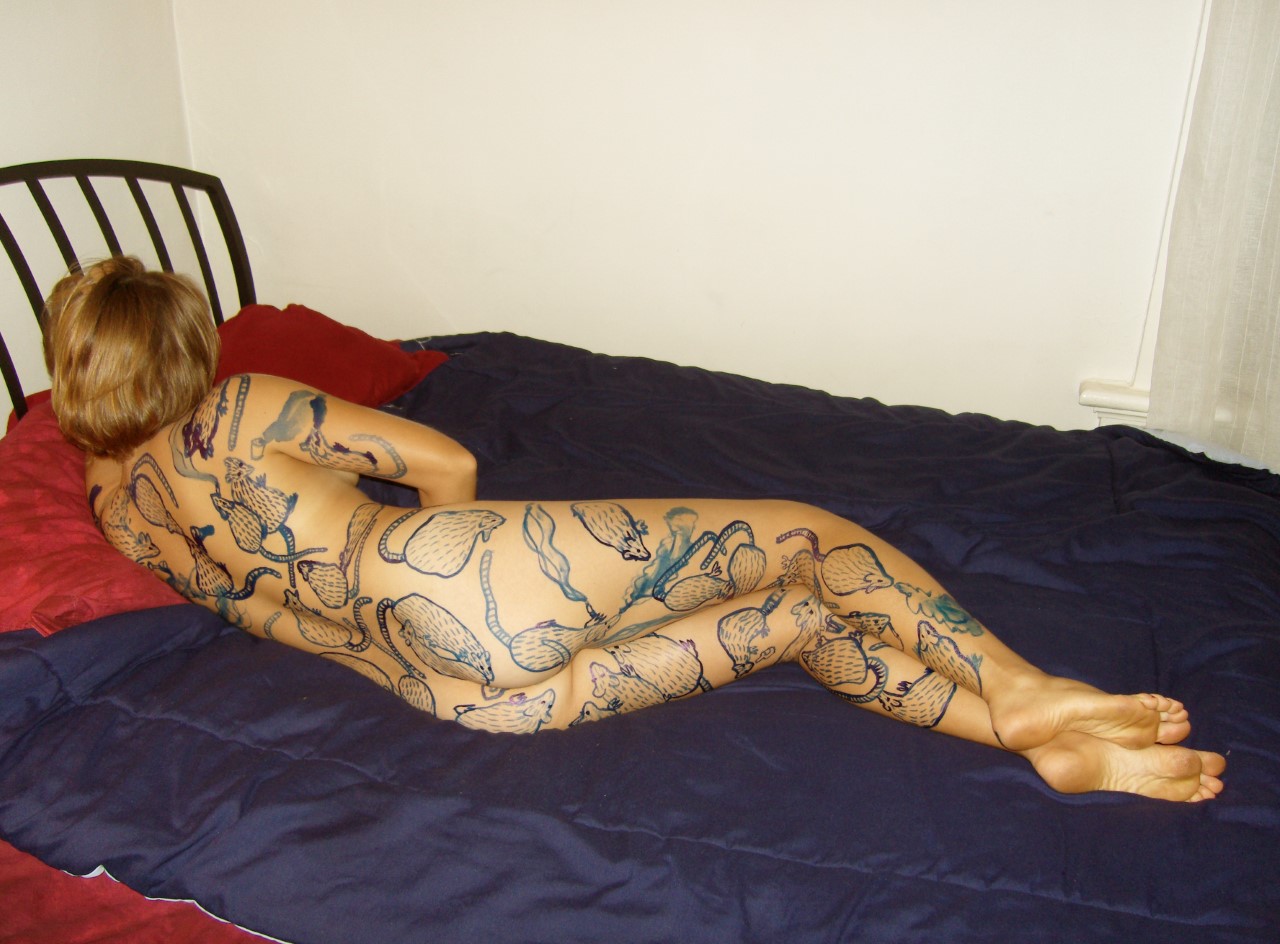
You appear to be working on a variety of items at present. Do you have any specific goals, ideas, or exhibition in-process. What’s the plan for the remainder of 2021 and the new year?
My plan is to keep make art, and hopefully travel. Visit my family over winter holidays (cross fingers.) In March 2022, I have an art residency at the Ellis-Beauregard Foundation in Maine.
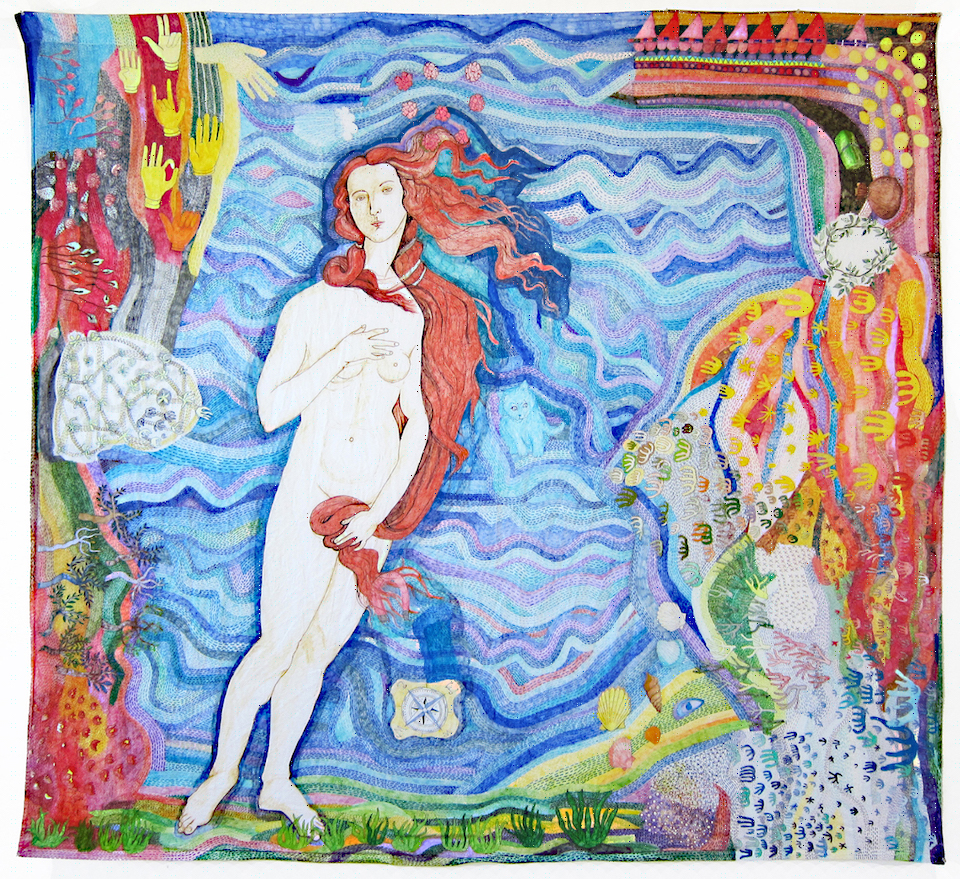
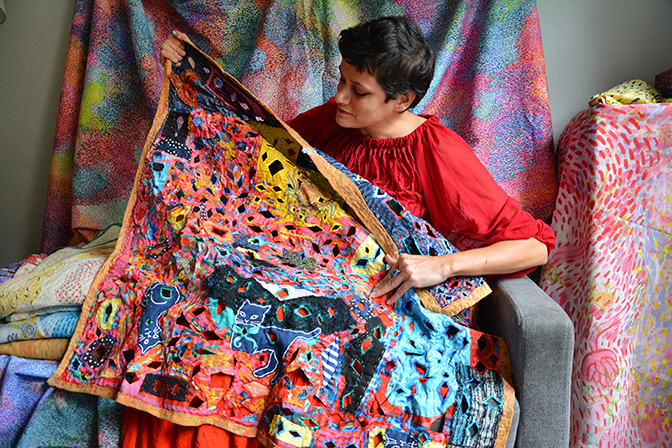
For additional information on the aesthetic practice of Zehra Khan, please check out:
Zehra Khan – www.zehrakhan.com
Instagram – Instagram @zehrakhanart
Interview and portrait by Chester Alamo-Costello


